
MINERALIUM DEPOSITA
Scope & Guideline
Illuminating the Path of Geochemical Research
Introduction
Aims and Scopes
- Mineral Deposit Formation Processes:
Research published in the journal frequently focuses on the various geological processes that lead to the formation of mineral deposits, including magmatic, hydrothermal, and sedimentary processes. This encompasses studies on fluid inclusions, isotopic analysis, and petrological characteristics. - Geochemical and Mineralogical Characterization:
The journal emphasizes the geochemical and mineralogical analysis of ore deposits, providing insights into their composition, origin, and evolution. This includes detailed studies on trace elements, isotopes, and mineral chemistry to elucidate the conditions under which mineralization occurs. - Ore Genesis and Metallogeny:
A core aim of the journal is to explore the genesis of various types of mineral deposits, including precious and base metals, rare earth elements, and other critical minerals. This involves understanding the tectonic settings and geological history that influence mineral formation. - Exploration Techniques and Models:
The journal also addresses advancements in exploration techniques and models, integrating geological, geochemical, and geophysical data to improve the prediction and discovery of mineral deposits. - Environmental Impact and Sustainability:
Research on the environmental impacts of mining and mineral extraction, as well as sustainable practices in mineral exploration and processing, is increasingly featured, reflecting a growing concern for responsible resource management.
Trending and Emerging
- Sustainable Mining Practices:
There is a noticeable increase in research dedicated to sustainable mining practices and the environmental impacts of mineral extraction. This includes studies on minimizing ecological footprints, waste management, and responsible sourcing of minerals. - Advanced Geochemical Techniques:
Emerging themes include the use of advanced geochemical techniques, such as in situ isotopic analysis and high-resolution mineral-scale studies, which provide new insights into ore genesis and fluid evolution. - Critical and Rare Earth Elements:
Research focusing on critical and rare earth elements is gaining traction due to their importance in modern technology and renewable energy applications. Studies explore their geological origins, extraction methods, and potential for sustainable use. - Multidisciplinary Approaches in Mineral Exploration:
The integration of geochemistry, geology, mineralogy, and even machine learning techniques in mineral exploration is increasingly prominent. This trend highlights the importance of a multidisciplinary approach to understanding complex ore systems. - Impact of Climate Change on Mineral Resources:
There is a growing interest in understanding how climate change affects mineral resources, including the influence of changing weather patterns on mineral exploration and the sustainability of mining operations.
Declining or Waning
- Traditional Mining Techniques:
Papers focusing on traditional mining methods and practices have become less frequent as the field shifts towards more innovative and sustainable exploration and extraction techniques. There is a greater emphasis on technological advancements and environmental considerations. - Generalized Economic Geology:
Research that broadly addresses economic geology without specific case studies or detailed analyses of particular deposits has waned. There is a trend towards more focused and detailed studies that provide in-depth insights into specific mineral deposits and their unique characteristics. - Single-Mineral Studies:
Studies that concentrate solely on the properties of individual minerals, without contextualizing them within broader geological or economic frameworks, are less common. The journal now favors comprehensive studies that integrate mineralogical data with geochemical and geological insights.
Similar Journals
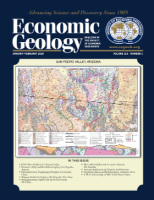
ECONOMIC GEOLOGY
Pioneering Insights in Geochemistry and GeophysicsECONOMIC GEOLOGY, published by the Society of Economic Geologists, Inc., is a premier journal dedicated to the field of economic geology, geochemistry, petrology, geology, and geophysics. With a significant legacy dating back to 1905 and converging into 2024, this journal has established itself as a leading source of research and knowledge in the geosciences, recognized for its high-quality, peer-reviewed articles that reflect the latest advancements in the discipline. Having achieved an impressive impact factor and categorized in the top Q1 quartiles, it ranks among the foremost journals in various related fields, including Earth and Planetary Sciences—where it particularly excels in geophysics (Rank #5) and geochemistry (Rank #6). Although it currently does not offer open access options, its rigorous publication standards ensure that the research disseminated significantly contributes to the understanding and exploration of geological resources. This journal is essential reading for researchers, professionals, and students who seek to deepen their knowledge and stay at the forefront of economic geology.
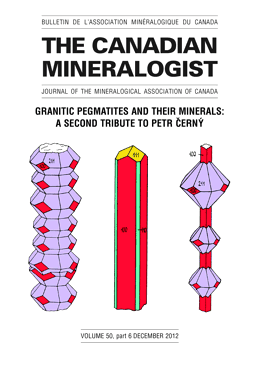
CANADIAN MINERALOGIST
Advancing Geochemistry and Petrology ResearchCANADIAN MINERALOGIST is a prestigious academic journal published by the Mineralogical Association of Canada, primarily focusing on the fields of Geochemistry and Petrology. Established in 1980, this journal has fostered a rich tradition of scholarly communication, offering a platform for researchers from around the world to share significant advancements and findings related to mineral science. With an impact factor that reflects its relevance within the scientific community, the journal occupies a notable position, ranked in the Q3 quartile within its category according to the 2023 assessments. The E-ISSN 1499-1276 ensures that online access is readily available, making it easier for readers to engage with cutting-edge research. With its headquarters in Quebec, Canada, CANADIAN MINERALOGIST not only contributes to the academic landscape in North America but also plays a vital role globally in advancing the understanding of mineralogy. Its commitment to high-quality publishing supports both the dissemination of knowledge and the nurturing of a vibrant scientific community.

MINERALOGICAL MAGAZINE
Exploring the Depths of Earth’s CompositionMINERALOGICAL MAGAZINE, published by Cambridge University Press, is a distinguished journal dedicated to advancing the field of mineralogy and its related disciplines, including geochemistry and petrology. With its ISSN 0026-461X and E-ISSN 1471-8022, this quarterly journal has successfully carved a niche since its inception, contributing critical research and insights from 1969, with ongoing publications up to 2024. Holding a commendable Q2 ranking in the field, it currently occupies the 61st position among 154 journals in its category, reflecting its robust influence as measured by Scopus rankings at the 60th percentile. Scholars and researchers seeking to publish impactful findings in earth sciences will find MINERALOGICAL MAGAZINE an essential platform that not only supports rigorous research but also fosters global discourse within the mineralogical community. Its accessibility ensures that valuable insights reach a wide audience, solidifying its position as a beacon for professionals and students alike in understanding the complexities of mineral compositions and their broader implications on earth science.

Solid Earth Sciences
Transforming knowledge into action for Earth's future.Solid Earth Sciences is a dynamic open-access journal published by Elsevier, dedicated to advancing our understanding of the Earth's subsurface processes and materials. Since its inception in 2016, the journal has established itself as a vital resource for researchers and professionals in the fields of geochemistry, petrology, geology, geophysics, and geotechnical engineering, achieving a notable Q2 ranking in multiple categories as of 2023. With an ISSN of 2451-912X, the journal aims to disseminate high-quality research that enhances knowledge of earth surface processes and the intricate interactions within our planet's systems. The journal is indexed in Scopus, showcasing an impressive rank in various sub-disciplines, with a rank of #96 in Geology and a noteworthy percentile in Earth and Planetary Sciences. Solid Earth Sciences offers a platform for innovative studies, comprehensive methodologies, and cutting-edge technological advancements that cater to a global audience of scientists, academics, and students. With its commitment to open access, it fosters wider dissemination and impact of research outcomes, ensuring that pivotal discoveries reach stakeholders and contribute to real-world applications.

Periodico di Mineralogia
Connecting Scholars in the World of MineralogyPeriodico di Mineralogia, published by SAPIENZA UNIV EDITRICE, is a distinguished academic journal based in Italy that has been pivotal in advancing the fields of Geochemistry, Geology, and Geophysics since its inception in 1979. With an ISSN of 0369-8963 and an E-ISSN of 2239-1002, the journal boasts a solid reputation reflected in its Q3 category rankings across these disciplines as per 2023 metrics. The journal’s scope encompasses a broad range of topics related to mineralogy and earth sciences, providing a vital platform for researchers, professionals, and students to disseminate their findings. Despite the absence of an Open Access option, Periodico di Mineralogia remains an essential resource for the dissemination of high-quality research that contributes to our understanding of earth processes and materials. Situated in the heart of Rome at PIAZZALE ALDO MORO 5, it serves as a crucial bridge between academic research and practical applications in geology and planetary sciences.

Applied Earth Science-Transactions of the Institutions of Mining and Metallurgy
Pioneering Research for Practical Earth Science ApplicationsApplied Earth Science - Transactions of the Institutions of Mining and Metallurgy, published by SAGE Publications Inc, is a vital academic journal located in the United Kingdom that seeks to illuminate the intricate relationship between earth sciences and the mining and metallurgy industries. With an ISSN of 2572-6838 and an E-ISSN of 2572-6846, the journal features peer-reviewed research encompassing various subfields such as Geochemistry, Petrology, and Geotechnical Engineering. As an open-access journal, it ensures that cutting-edge findings are readily available, promoting broad access to knowledge crucial for professionals, researchers, and students alike. With its convergence of research years from 2018 to 2024, the journal maintains a Q3 ranking in Earth and Planetary Sciences and Q4 rankings in Geochemistry and Petrology as well as Geotechnical Engineering, which demonstrates its emerging influence in these disciplines. The journal not only provides a platform for innovative research but also addresses practical challenges faced within the field, making it essential reading for those engaged in the applied earth sciences.
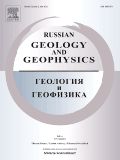
Russian Geology and Geophysics
Advancing Earth Sciences through Rigorous ResearchRussian Geology and Geophysics is a seminal journal published by GEOSCIENCEWORLD that plays a pivotal role in the dissemination of vital research within the realms of Earth-Surface Processes, Geology, and Geophysics. With an ISSN of 1068-7971 and an E-ISSN of 1878-030X, this journal has witnessed a continuous evolution since its convergence in 2007 and is poised to thrive through 2024. While it is not an Open Access journal, it is recognized for its significant contributions to the academic community, holding a respectable Q2 ranking in Earth-Surface Processes and Q3 rankings in both Geology and Geophysics as of 2023. The journal’s impact factors align it within competitive quartiles, marking it as an essential resource for researchers and professionals seeking to stay at the forefront of geological and geophysical sciences. By publishing high-quality peer-reviewed articles, the journal fosters an environment of knowledge sharing and innovation, making it indispensable for students, practitioners, and scholars alike who are dedicated to advancing our understanding of Earth's complex systems.
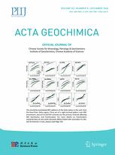
Acta Geochimica
Bridging Science and Discovery in Geochemistry.Acta Geochimica is a prominent academic journal published by SPRINGER INT PUBL AG, focusing on the dynamic fields of Geochemistry and Petrology. Established in 2016, this peer-reviewed publication has quickly gained recognition within the scientific community, currently holding a category quartile ranking of Q3 in Geochemistry and Petrology as of 2023. With its ISSN 2096-0956 and E-ISSN 2365-7499, the journal offers a platform for researchers and professionals to disseminate and discuss significant advancements in the study of the chemical composition of the Earth and other celestial bodies. While it is not an open-access journal, Acta Geochimica plays a vital role in fostering collaboration and innovation among scientists, contributing to a deeper understanding of geochemical processes. Located in Switzerland at Gewerbestrasse 11, Cham CH-6330, Switzerland, this journal is a critical resource for students, researchers, and professionals seeking to push the boundaries of knowledge in Earth sciences.

ACTA PETROLOGICA SINICA
Connecting Researchers in the Earth SciencesACTA PETROLOGICA SINICA, published by SCIENCE PRESS, is a distinguished journal in the field of geochemistry and petrology, known for its commitment to advancing the understanding of Earth's materials and processes. With an impact factor ranking it in the second quartile (Q2) of its category and a respectable Scopus rank of 64 out of 154, this journal serves as a vital platform for researchers, professionals, and students alike, facilitating the dissemination of innovative studies and findings from 1980 to the present. Its robust editorial board and diverse array of articles make it an invaluable resource for those engaged in the intricate analysis of petrological phenomena and geochemical transformations. Published in China, ACTA PETROLOGICA SINICA provides access to significant original research, reviews, and insights essential for advancing knowledge and fostering collaboration in the earth sciences.
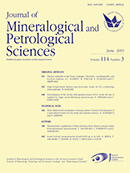
Journal of Mineralogical and Petrological Sciences
Exploring the Depths of Earth’s TreasuresThe Journal of Mineralogical and Petrological Sciences, published by the Japan Association of Mineralogical Sciences, serves as a vital platform for disseminating high-quality research in the fields of mineralogy and petrology. With a presence in both traditional and digital formats (ISSN: 1345-6296; E-ISSN: 1349-3825), this journal fosters scholarly engagement and innovation within these crucial branches of Earth Sciences. As evidenced by its Q3 ranking in both Geology and Geophysics categories for 2023, Journal of Mineralogical and Petrological Sciences maintains a significant standing within the academic community, contributing to the ongoing discourse and exploration of mineralogical phenomena and processes. Researchers, professionals, and students alike will find valuable insights and advancements represented within its pages, with a commitment to inclusivity in research output spanning two decades (2000-2024). Although not currently open access, the journal remains a key resource for understanding the complexities of our geological world.